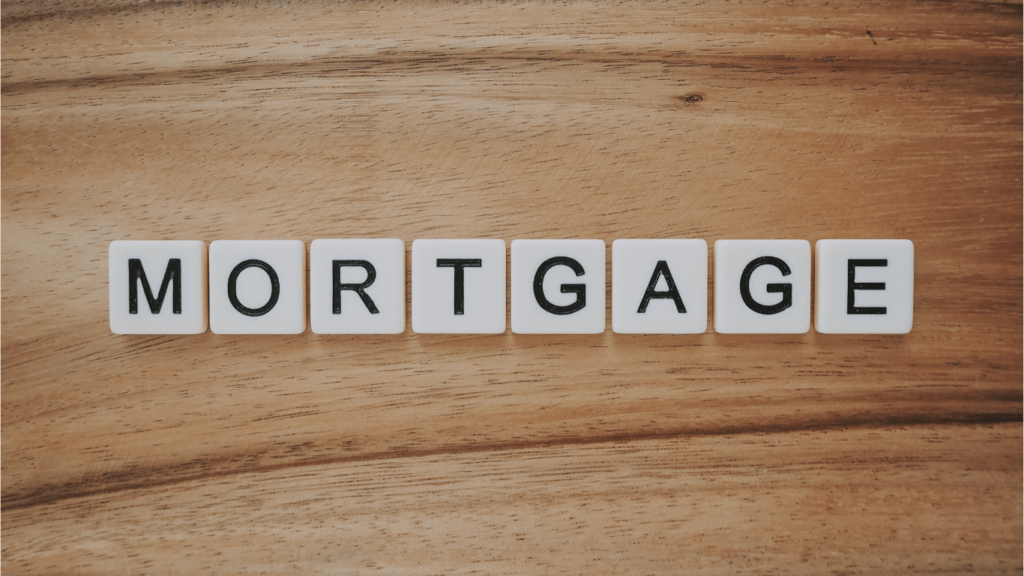Understanding Mortgage Rates
Mortgage rates, the interest rates applied to loans for buying homes, directly affect the total cost of home ownership. They fluctuate based on several factors including:
- economic conditions
- inflation
- central bank policies
Understanding these factors helps those looking to buy a home make informed financial decisions. Economic conditions, like GDP growth and employment rates, influence mortgage rates. Strong economic growth can lead to higher rates due to increased demand for homes and loans. Conversely, weaker growth may lead to lower rates as demand decreases.
Inflation, which erodes purchasing power, often prompts central banks to raise interest rates to control it. Higher central bank rates typically translate to higher mortgage rates. Monitoring inflation trends can offer insight into potential rate changes.
Central bank policies, especially decisions by the Federal Reserve, significantly impact mortgage rates. For instance, if the Fed raises the federal funds rate, mortgage rates usually rise. Keeping an eye on Fed announcements is crucial for anticipating rate movements.
Lenders, encompassing banks and financial institutions, also play a role in determining mortgage rates. They assess credit scores, loan types, and down payment amounts. Better credit can lead to lower rates, while smaller down payments might attract higher rates.
Fixed vs. variable rates offer different financial prospects. Fixed rates stay the same throughout the loan term, providing stability. Variable rates, adjusted periodically, can result in lower initial payments but may increase over time, depending on market conditions.
Understanding mortgage rates and their determinants empowers prospective homebuyers to navigate 2024’s real estate market confidently. They can make strategic decisions regarding loan types, improve their credit, and monitor economic indicators to optimize their home-buying experience.
Historical Context of Mortgage Rates
Mortgage rates have seen significant fluctuations over the years, impacting home-buying decisions and financial strategies. Understanding past trends and influential factors helps contextualize current market conditions.
Trends Over the Past Decade
Over the past decade, mortgage rates experienced several notable shifts. From 2010 to 2013, rates were historically low, hovering around 3.5% to 4.5% for a 30-year fixed-rate mortgage. In 2016, these rates dipped to around 3.41%, driven by economic uncertainty and Federal Reserve policies. However, by late 2018, rates increased to nearly 5%, as the Fed raised interest rates to curb inflation. The COVID-19 pandemic in 2020 brought rates back down to record lows, around 2.65%, regenerating demand in the housing market. By 2023, rates began rising again, influenced by inflation and economic recovery efforts.
Key Factors Influencing Mortgage Rates

Several key factors consistently influence mortgage rates:
- Economic Conditions: Strong economic growth often leads to higher rates as demand for credit increases. Conversely, during economic downturns, rates tend to drop.
- Inflation: Higher inflation typically prompts central banks, like the Federal Reserve, to raise interest rates to maintain purchasing power.
- Monetary Policies: Federal Reserve decisions on interest rates can cause immediate changes in mortgage rates. For example, rate hikes aimed at controlling inflation generally lead to higher mortgage rates.
- Credit Markets: Lender assessments of borrower credit scores, loan types, and down payments significantly impact individual mortgage rates.
- Global Events: International economic events, such as financial crises or geopolitical tensions, can result in fluctuating rates due to investor reactions.
These factors create a dynamic environment, necessitating close monitoring for prospective homebuyers aiming to make informed financial decisions.
Current Landscape in 2024
Navigating the home buying process in 2024 means understanding the ongoing impact of rising mortgage rates. Significant economic shifts and policy changes are shaping the market dynamics.
Present Mortgage Rates and Projections
In early 2024, average mortgage rates hover around 6.5%, up from 5.75% in 2023. Analysts from Freddie Mac suggest rates could reach 7% by the year’s end. Higher rates raise monthly payments and borrowing costs, affecting affordability. For example, on a $300,000 loan, an increase from 5.75% to 6.5% could mean $150 more per month. Buyers may delay purchasing or seek smaller homes, impacting housing demand. Projections from the Mortgage Bankers Association anticipate a slight rate decrease in late 2024, conditioned on economic stabilization.
Economic Factors at Play
Several economic forces drive the current rates. Inflation remains a central concern; the Consumer Price Index (CPI) rose by 6.2% in 2023. High inflation prompts the Federal Reserve to increase interest rates to control price growth. The Fed’s rate hikes indirectly push mortgage rates higher. Additionally, strong employment numbers, with a 3.5% unemployment rate, signal economic resilience, further encouraging rate elevation. Global events, like geopolitical tensions and supply chain disruptions, also play roles, causing financial market volatility. Stable mortgage rates depend on broad economic health, emphasizing the importance of close monitoring.
Considering these factors helps prospective homebuyers make informed decisions in a fluctuating market.
Effects on Home Buyers
Rising mortgage rates in 2024 are reshaping the home buying experience. These high rates have both immediate and long-term effects on home buyers’ decisions and opportunities.
Affordability Challenges
Home buyers face significant affordability challenges as mortgage rates increase. Higher rates lead to higher monthly payments. For example, a $300,000 loan at a 6.5% rate results in a monthly payment of approximately $1,896, compared to $1,750 at a 5.75% rate. These increased payments reduce purchasing power, forcing many to reassess their budgets and possibly seek lower-priced homes. In some cases, potential buyers might delay their plans, waiting for more favorable rates.
Impact on First-time Buyers
First-time buyers are particularly affected by rising mortgage rates in 2024. They typically have smaller down payments and less established credit histories. Higher rates mean their monthly payments are more substantial relative to their income. For instance, a loan requiring $1,896 monthly at a 6.5% interest could be prohibitively costly for those on tighter budgets. This financial strain makes it harder to qualify for loans and narrows their options. As a result, many first-time buyers might postpone purchasing a home or opt for smaller properties to mitigate the financial burden.
Housing Market Dynamics
Understanding housing market dynamics in 2024 is critical for prospective homebuyers facing rising mortgage rates.
Buyer Behavior and Sentiment
Buyer behavior shifts noticeably in response to higher mortgage rates. Prospective buyers exhibit caution, adjusting their financial plans to accommodate increased borrowing costs. Many delay purchases, waiting for potentially lower rates, while others opt for smaller, more affordable properties. First-time buyers, with shorter credit histories and limited down payments, often find it harder to secure favorable loan terms.
Sentiment among buyers also declines. Increased rates create uncertainty, causing potential buyers to reassess their ability to afford homes. Nationwide surveys indicate a dip in buyer confidence correlating with rising rates, further impacting the number of active home searches and pending sales. The fear of escalating monthly payments and the possibility of rate hikes lead to hesitation, affecting overall market activity.
Changes in Housing Demand
Higher mortgage rates directly reduce housing demand. As borrowing costs climb, fewer buyers can afford to purchase homes, leading to a drop in demand. Real estate markets in regions with previously high buyer interest, such as urban centers, see a notable decline. Increased costs force many prospective buyers to reevaluate their budgets, pushing some out of the market entirely.
Inventory levels adjust accordingly. Sellers facing a reduced pool of buyers may lower asking prices or offer incentives to attract interest. This creates a ripple effect, potentially stabilizing or even reducing home prices in certain areas despite the initial upward pressure from high demand. Data from the National Association of Realtors (NAR) highlights a correlation between rising rates and shrinking demand, emphasizing the need for buyers to adapt swiftly to changing conditions.



 Betsylie Sheetsin – Home Renovation Expert
Betsylie Sheetsin serves as the Home Renovation Expert at Castle Shelf House, specializing in giving practical advice for both small and large-scale home improvements. With years of experience in construction and renovation, Betsylie understands the importance of blending durability with design. Her insights into home renovation projects, along with expert advice on the latest materials and techniques, empower homeowners to tackle even the most ambitious projects confidently.
Betsylie Sheetsin – Home Renovation Expert
Betsylie Sheetsin serves as the Home Renovation Expert at Castle Shelf House, specializing in giving practical advice for both small and large-scale home improvements. With years of experience in construction and renovation, Betsylie understands the importance of blending durability with design. Her insights into home renovation projects, along with expert advice on the latest materials and techniques, empower homeowners to tackle even the most ambitious projects confidently.
